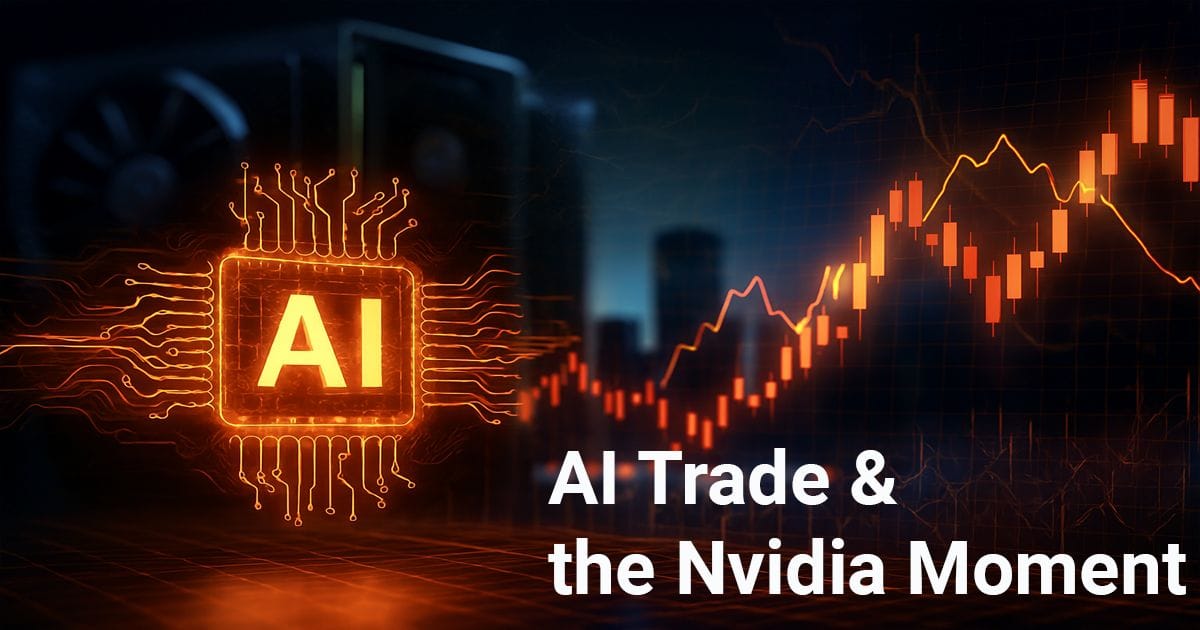The AI market just hit a moment that every investor, creator, and tech-focused professional needs to understand. Nvidia’s latest performance was strong, yet the market reacted with hesitation, a signal that the AI boom is entering a more complex, more revealing phase. This story isn’t about a single company; it’s about the tectonic shift happening beneath the entire AI ecosystem. From infrastructure demand and valuation pressure to concentration risks and the next wave of monetisation, the signals are louder than ever. If you want clarity on where the AI trade is truly heading and what this shift means for builders, developers, and strategists, this breakdown will give you the full picture. Missing it means missing the direction of the next major tech cycle.
1. Setting the Scene
The markets have lately been treating the AI theme like a loaded spring. The narrative: big wins in AI infrastructure → high valuations → investor euphoria. Then along came a sharp turn. Even though Nvidia posted strong results, the broader AI trade hit turbulence. In short, Nvidia may have delivered, but the market’s questions went far deeper.
• Nvidia beat expectations, showing that the AI-hardware boom is very real.
• Yet many investors remain uneasy. Are we just witnessing the beginning of a structural shift, or riding a hype-wave that ends in a washout?
• For you (and me) as strategists or developers: this moment is less about loading up on Nvidia, and more about which parts of the AI value chain will hold up when the music stops.
2. What Nvidia’s Results Tell Us
Myself: I read Nvidia’s recent earnings as strong support for the infrastructure side of AI, the chips, servers, data centers, and networking. That’s where the demand still shows up.
But here’s the nuance: results were strong yet were not enough to fully renew investor confidence in the broader AI trade. One way to frame it: the deliverables got better, but the expectations were still wild.
There’s a concentration risk: Nvidia’s business is still heavily exposed to a handful of major customers, meaning the broader AI market remains relatively narrow. (Reflected in discussions linking to Nvidia’s outsized share and dependencies.)
Also: the existence of strong results doesn’t automatically fix valuation risk. We’re seeing discussions that a good quarter doesn’t automatically erase fears of over-extension or bubble dynamics.
3. Why the Broader AI Trade is Under Pressure
There are a handful of structural and sentiment cues you need to keep on your radar (especially as you think about tech stacks, product investments, or even advising clients).
Valuation vs. real-economics mismatch: Just because AI promises big stuff doesn’t mean all parts of it are delivering near-term returns. Some very recent work models the gap between AI capability and realised value, a concern for investors.
Risk of crowding and concentration: A small number of companies dominate AI hardware and cloud infrastructure, so the “AI trade” may feel less diversified and more brittle than many assume.
Macro/monetary context: Bubble fears typically aren’t triggered by great earnings alone; often, there's a catalyst like interest-rate tightening. Some big-picture thinkers believe we’re missing that trigger for now, which gives the bull case more runway, yet that means “no explosion ahead” isn’t the same as “safe path”.
Investor behavior and hedge-fund risk: Some hedge funds are finding it harder to hedge in a world where AI stocks dominate the upside; higher correlations reduce diversification, which is a strategy risk.
Selection risk across the AI stack: Not every AI segment will win. The hardware layer might be for now, but software, applications, monetisation models, there’s more uncertainty.
4. What to Watch (and What To Do)
For you as a strategic thinker (and as someone involved in tech/web dev/electronics) these levers matter:
Watch these indicators:
Infra-capex commitments (e.g., cloud providers ordering chips and servers)
Customer diversification for big infra players (to check concentration risk)
Rate-of-return by AI applications (how fast do models monetise?)
Regulatory/ export control developments (hardware supply flows matter)
Hedge-fund and institutional behavior (high fund correlation = higher systemic risk)
Strategic moves you might consider:
Rather than an “AI trade” broad bet, pick component bets: for example, infrastructure services (data centres, networking) vs. application layer (where monetisation often lags).
Build in hedges: assume that some of the AI hype is ahead of real value — so allocate part of your portfolio to non-AI or more defensive tech exposures.
As a developer/engineer, focus on those areas where AI hype meets real demand (e.g., cyber-security, efficient inference hardware, edge applications) rather than chasing the broad go-big-AI dream.
Stay flexible: if we enter a phase where AI valuations retrace before the underlying tech fully plays out, being nimble will win. Have exit/safe zones defined.
My Take — The Strategic Summary
Here’s the candid take: Nvidia’s delivery is a strong signal that the AI infrastructure story is far from over. But the broader market trade “own everything AI and watch it grow forever” was never just about Nvidia; it was also about sentiment, valuation, and faith in monetisation. And in those areas, cracks are showing.
Source: Based on Bloomberg analysis — “Nvidia Didn’t Save the Market. What’s Next for the AI Trade?”

